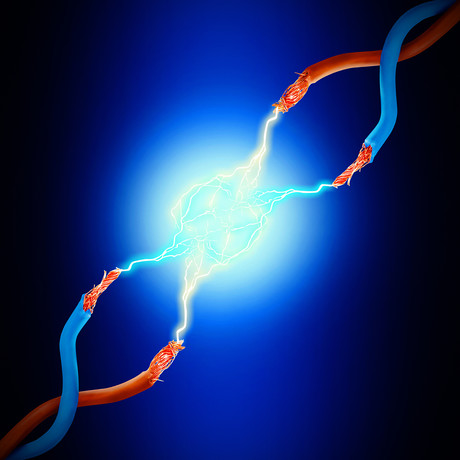Technology predicts electrical fires before they start

With summer fast approaching, it’s easy for businesses and households to get caught up in preparing for Australia’s peak bushfire season, clearing leaves and twigs from gutters, cutting back shrubs and removing debris. But what is often dangerously overlooked is one of the country’s most common causes of fires in the built world: electrical failure or electrical ‘arc’ related fires.
Electrical fires started by appliances, overloaded power points, damaged power outlets and general cabling wear and tear are one of Australia’s leading causes of fires.
According to GEC Global, 20% of all fires are caused by electrical failure or faults, and in New South Wales, appliances and electric failures fuel about 40% of fires.
While the usual culprits like heaters, overloaded electricity circuits, faulty fuses and loose wire connections are well known, everyday appliances such as kettles, fridges, and laptop and mobile phone chargers can also play a major role in igniting fires. Earlier this year, an electrical fault was believed to be the ignition source of a fire that destroyed a shed and two businesses in Sydney, and last month a fridge was found guilty of setting a service station alight in Queensland due to an electrical fault in its compression unit.
So what can you do to prevent electrical fires likes these happening throughout the year?
How to spot the clues before it all goes up in smoke
Discoloured or charred outlets and switches are two of the biggest telltale signs of an electrical fire waiting to happen, as is a circuit breaker that keeps tripping. Replacing old wiring, although costly, is a proactive measure to preventing electrical fires.
But electrical arc faults or failures are not always easy to identify, and therefore harder to mitigate.
Electric arc faults or failures can be best described as when loose or corroded wiring makes irregular or sporadic contact with metal contact points, causing electric currents to spark or arc. The buzzing or hissing sound coming from a light switch or outlet is often the sound of electrical arcing taking place. Each arc heats and gradually ignites the wiring insulation.
Turning to technology
Some common causes of electrical arcs include pulling cables out of power points repeatedly without care, crushing cabling between objects, cable damaging from rodents and circuit conductor faults.
Europe and America have already established safety standards relating to the installation of arc fault detection devices (AFDDs), with Australia soon to follow.
Provision for installing AFDDs was a new addition in the latest electrical installation industry standards AS/NZS 3000:2018 (otherwise known as the Wiring Rules for Australia and New Zealand). While installation of these devices is not yet mandatory, the inclusion of arc detection devices in the new standard developed by Standards Australia, in collaboration with industry and government, is a big step towards widespread technology adoption.
AFDDs are specifically targeted to safeguard against arc faults by automatically tripping or cutting the power to a circuit when they detect unusual or harmful electric arcs. However, these devices can often set off a false alarm and trip off the power disrupting the power supply to a business or building, or they fail to trip the circuit at all.
Ecocentric Energy has developed a technology that detects electrical failure or arcs well before the need to trip a circuit. The Perth-based company’s Numen technology is a cloud-based data analytics platform that continuously monitors, analyses and learns the performance and energy usage pattern of a building.
Numen can reveal the behaviour and performance of devices and monitor appliances and circuits for faults, including electrical arcs. For example, in the case of the Sydney fire that destroyed two businesses, it could have identified the electrical fault via its analysis of the buildings’ energy behaviour patterns, saving thousands in damages.
Making the world a safer place
By 2023, the global arc flash protection/detection market is expected to reach US$2.5 billion, growing at about 5% each year between 2018 and 2023 as the technology continues to advance and prove its reliability in fire prediction and safety.
Numen has been developed in partnership with federal agency CSIRO, with the technology tried, tested and third-party certified for international deployment.
Numen is currently being trialled at a multinational insurance business in Australia, which could lead to a nationwide rollout next year. This arc detection technology has the potential to prevent electrical fires, save businesses thousands in damage costs and save lives.
The future of fire prevention lies in better understanding and detecting electrical arcs, and I’m confident in technology’s role when it comes to shaping global efforts targeting fire hazards throughout the built world.
The case for standalone power
With much of Australia's critical infrastructure vulnerable to extreme weather, standalone...
How to avoid a US electricity crisis?
A meeting of energy experts organised by Stanford University has come up with six big ideas for...
How power and control cables form the backbone of industrial automation
In this article, cable company LAPP explores the various characteristics and applications of...




